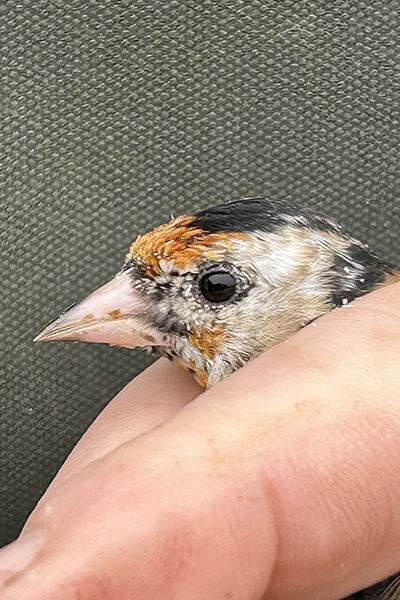Its a long time since I've managed to do any ringing in our garden. A combination of time and bad weather meant I've not had the opportunity to do much. The recent anti-cyclonic doldrums, due to a high pressure system sat over the UK for several weeks, gve the ideal combination of dull weather and no wind!
With Redwings beginning to stream in over our part of Cheshire it was time to try and catch a few at dawn and dusk. I don't catch many but they're always nice to see in the hand. The ones I catch are of the Scandinavian sub-species iliacus and I've never caught any of the swarthier and darker Icelandic corbuni.
See here for a comparison of the two sub-speices when I was on a Fair Isle a few years ago:
https://wirralbirders.blogspot.com/2017/10/fair-isle-day-3-day-of-thrushes.html
As can be seen from the photos below all 'my birds' have relatively clean under tail coverts.
Every year I collect our windfall apples and start placing them in strategic points in the garden to attract winter thrushes. With the arrival of the Redwings came Blackbirds and Fieldfare and I set a whoosh net to try and catch a few of these that are attracted to the apples. Most of the Blackbirds are bulky long-winged Scandinavian birds as exemplified by a Dutch ringed control I caught a couple of years ago in mid December. With Hilbre Bird Obs recently controlling a Blackbird wearing a Swedish ring I'm my luck will be in again this year. See details
here on the Hilbre blog.
I've caught a few Blackbirds but the biggest prize was this 1st winter Mistle Thrush that couldn't resist the windfalls after demolishing all the berries on our yew tree! Only the 2nd I've ever caught in the garden and both have been whoosh- netted. From the photo below you can just make out the outermost retained juvenile greater covert.
I've also been catching a few other garden visitors with Goldfinches being the commonest. These can be difficult to age correctly this year as global warming and milder climates has meant many are undergoing more extensive post -juvenile moult akin to the populations in southern Europe. There was no doubt about these birds though wit ha definite moult contrast in the greater covert with the juvenile type being buff tipped.
They must have had a good breeding season, despite the weather, as some are still looking distinctly juvenile around the head indicating a late brood.
All in all a productive few days and a chance to get my eye in again after a busy seabird ringing season!




































































